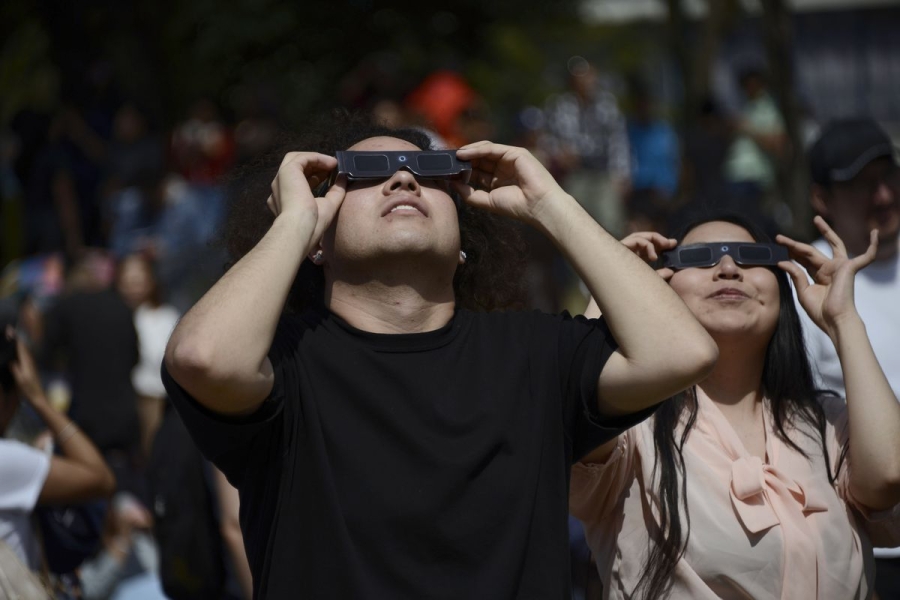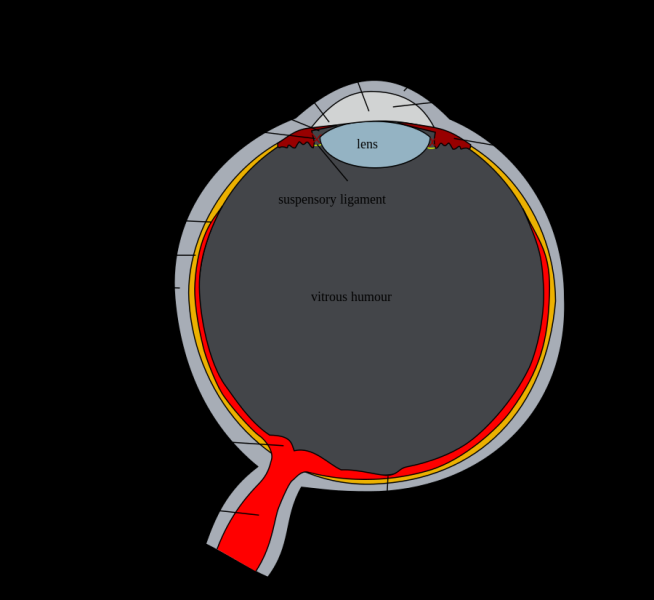Yes, solar eclipses can blind you. Here’s how to protect your eyes.

Brian Resnick is Vox’s science and health editor, and is the co-creator of Unexplainable, Vox’s podcast about unanswered questions in science. Previously, Brian was a reporter at Vox and at National Journal.
When the total solar eclipse comes to the United States on April 8, there is one rule you must remember: Never stare directly into the sun. Even when the sun is partially obscured by the moon, its rays are still strong enough to permanently damage your eyesight. The only time to look upon the eclipse without glasses is when the sun is fully covered by the moon during totality, which only will last three or four minutes, depending where you are. If you are not in the narrow path of the totality, spanning from Texas to Maine in the United States, this will not be an option for you.
To look at the sun during the eclipse’s partial phase, you either have to find some eclipse glasses, or use an indirect method — like a pinhole projector (more on that below) — to view the eclipse. Because if you don’t, you risk permanent eye damage.
So here’s a short guide to why staring at the sun is so bad for you, and what you need to look out for when purchasing (you can still get yours with rush shipping) or using eclipse glasses.
How the sun can burn a hole in your eyeball
The sun is the most powerful source of energy in the solar system. It’s the most energetic object for light-years in all directions (it’s literally a huge fusion reactor). The energy it expels is so intense it can actually burn holes in your vision.
And it’s particularly dangerous because of the anatomy of our eyes, Joel Schuman, chair of ophthalmology at NYU Langone Health, told me in 2017. When light enters our eyes, the lens focuses light to the retina, located in the back of the eye. We see thanks to the retina’s chemical sensors picking up on the presence of light and transmitting information to the brain.
The retina can handle indirect sunlight just fine. But think of what happens when you hold a magnifying glass up to the sun. It focuses light intensely enough to start a fire.
Something similar happens with the lens in your eye when it’s focused directly on the sun.
“The light from the sun is very intense and concentrated into a very small area, and then that light is converted into heat and that heat cooks the retina,” Schuman said. “So you have a permanent area that you don’t see, a permanent blind spot.” What’s worse, a retina burn doesn’t heal like a sunburn on the skin. It actually doesn’t heal at all.

It doesn’t heal because the retina is nerve tissue, Schuman explained, which doesn’t readily regenerate. Think of it like a spinal cord tear: permanent. And because the light from the sun hits the center of the retina, this burn occludes the sharpest region of central vision.
“Oh, 20 seconds probably, that’s all it took,” Louis Tomososki, an Oregon man who was partially blinded during a total solar eclipse in 1963, told a local NBC affiliate. “Looking at someone and being able see their face — but not their nose” is how he described it to NBC.
In less severe cases, Schuman said, there may just be swelling in the retina. This can be treated with steroids or other anti-inflammatory drugs.
So be sure, if you think your eyes have been damaged, to see a doctor for treatment!
Normally we don’t look at the sun because it’s uncomfortable. But an eclipse is an opportunity to appreciate our place in the universe.
In 1999, a solar eclipse passed over the United Kingdom. Just one hospital alone in Leicester had 45 patients complaining of eye trouble, the journal Lancet reported. Twenty of the cases involved burns or inflammation to the retina.
So how do eclipse glasses work?
On April 8, a total or partial solar eclipse will be visible from the entire continental United States. But wherever you are, “it is never safe to look directly at the sun’s rays — even if the sun is partly obscured,” NASA warns. Even when the sun is 99 percent obscured, it can still cause damage.
That’s why during a partial eclipse — and even through the early and later phases of a total eclipse when you can see the last bits of sun peeking through the craters of the moon — you’ll need eye protection. You can only take off the protective glasses when the moon has completely covered the sun during totality.
Regular sunglasses won’t block enough light. You’ll need glasses that filter all but 0.003 percent of visible light and block out most ultraviolet and infrared as well. “Such filters usually have a thin layer of aluminum, chromium or silver deposited on their surfaces that attenuates ultraviolet, visible, and infrared energy,” NASA’s eye safety page explains. Using photo or X-ray film is not safe.
(The same goes for looking through binoculars, mirrored cameras, or telescopes: If you’re looking at the sun through them, you’ll need to put special filters on the lenses.)
You could grab a pair of the darkest available (No. 14) welder’s glasses. But this is even easier: Pick up a dirt-cheap pair of disposable eclipse glasses. The American Astronomical Society (AAS) points out several manufacturers that meet international standards for eclipse eye protection. They are:
- Grafix Plastics
- Halo Eclipse Spectacles
- American Paper Optics/eclipseglasses.com
- Seymour Solar
- Flip’n Shades
- DayStar Filters
- Rainbow Symphony
- Thousand Oaks Optical
(The AAS has more information on eclipse glasses retailers.)
Importantly, the AAS does not recommend “searching for eclipse glasses on Amazon, eBay, Temu, or any other online marketplace and buying from whichever vendor offers the lowest price.” To avoid a counterfeit, the American Astronomical Society recommends using glasses purchased from its list of approved, vendors. Be sure to identify the manufacturer of the glasses and see that they are on the approved list above. (The AAS also has a helpful guide to spot fake or counterfeit glasses here.)
The good news is you might be able to pick up a verified pair for free at a local library. The Space Science Institute has donated 5 million solar eclipse glasses to 10,000 libraries across the United States. Call your local library and ask whether they have any available.
The safest way to view an eclipse: through a pinhole projector
Or if you don’t want to risk looking directly at the sun at all, try making a pinhole projector. All it takes is a piece of paper and a pin. The pinhole mimics the properties of a lens, and it will project the image of the sun onto a flat surface. The Verge has a great, thorough guide on how this all works.
One last reminder: If you’re in the path of the total solar eclipse, you can take off the protective glasses the moment the moon is covering the sun 100 percent. Actually, if you don’t, you’ll miss the best part of the whole phenomenon: seeing the sun’s outer atmosphere, the corona.
Source: vox.com






